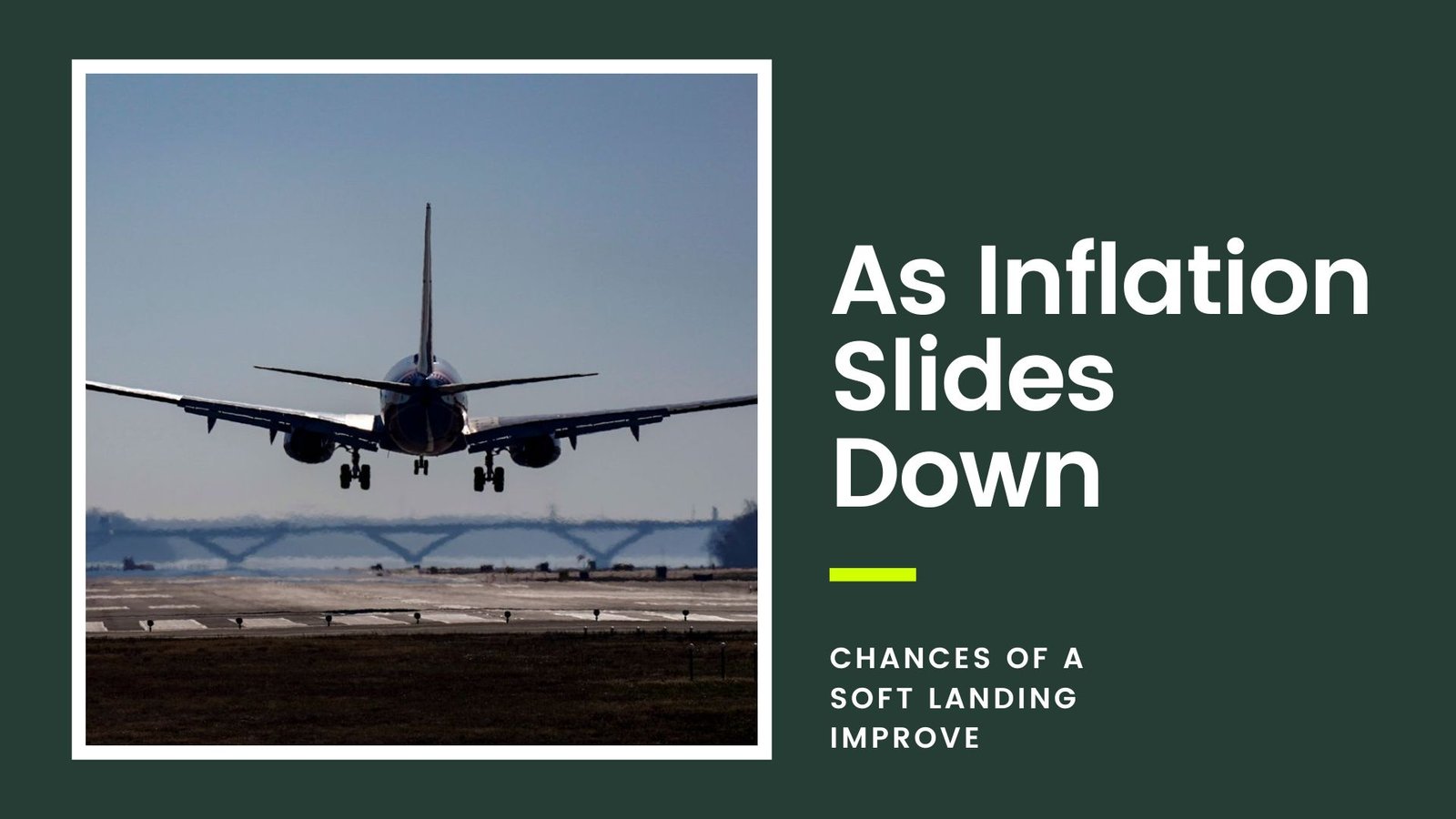
As Inflation Slides Down, Chances of a Soft Landing Improve
As Inflation Slides Down, Chances of a Soft Landing Improve
Inflation and recession are the two major economic concerns for Americans. Interestingly, these two factors are interconnected. The longer inflation remains persistent, the greater the likelihood that it may take a recession to bring it under control.
Fortunately, the latest data indicates that the risk of this scenario is decreasing. Headline inflation has dropped significantly, going from 9.1% in June of last year to 4% in May and further down to 3% in June of this year. While part of this decline is due to technical factors, such as the exclusion of a surge in prices from June 2022 in the 12-month calculation, it’s important to be cautious about assuming this trend will persist, as headline inflation might increase in the upcoming months.
More encouragingly, underlying inflation has been on a downward trend in recent months, even without significant weakening in the labor market. This suggests that the odds of a “soft landing,” where inflation returns close to the Federal Reserve’s 2% target without triggering a recession, are improving.
Factors Influencing Inflation

The surge in inflation in 2021 was influenced by two main forces. The first force came from transitory shocks related to supply chains, energy prices, real estate, and the labor force, all of which were brought on by the pandemic, stimulus measures, and war. The second force stemmed from underlying factors such as supply, demand, and expectations. Once the transitory effects subside, we will have a clearer understanding of the impact of these underlying forces on inflation.
Over time, the transitory forces have gradually subsided. For instance, gasoline prices have returned to pre-Russia invasion levels. Airfares, which rose by 20% between the start of the pandemic and June 2022, have fallen by 19%, including an 8% drop last month. Similarly, used car prices, which surged by 55% between the start of the pandemic and January 2022, have fallen by 8%, including a 0.5% decrease last month. Auction data indicates that further declines in used car prices are expected.
Housing costs, a significant component of the consumer-price index, skyrocketed during the pandemic due to low mortgage rates, pandemic-induced migration, and construction material shortages. However, private measures of rent increases have substantially slowed down in the past year, which should also contribute to lowering official inflation rates in the months to come.
Read More:
- Fed Takes Cautious Approach: Quarter-Point Interest Rate Rise Implies Possible Pause
- When is iPhone 15 Released? | Announced Model, Color, Release Date
Assessing Underlying Inflation
Economists use indexes that exclude components most susceptible to unusual shocks to gauge underlying inflation. By excluding food and energy, the core Consumer Price Index (CPI) increased by 4.8% in June, compared to 6.6% nine months earlier. Excluding all goods, energy, and housing, the CPI rose by only 4% in the last 12 months, with an annual rate of just 1.4% in the last three months.

Positive Signs for Inflation Easing
Harvard University economist, Jason Furman, analyzes seven different underlying inflation indexes over three-, six-, and 12-month periods. After adjusting them to mimic the price index of personal-consumption expenditures (the basis for the Fed’s 2% target), Furman found that the median of all those measures had fallen to 2.8% in June from 4% in April.
While expressing some caution about the euphoria surrounding the June CPI, Furman is pleasantly surprised at the progress made in curbing underlying inflation. He believes that if unemployment does not rise, inflation will end the year around 3.5%, better than his previous expectation of 4% several months ago. However, he also cautions that this level of inflation is still too high for the Fed to achieve a full-on soft landing, which would require a considerable amount of luck.
Reevaluating the Inflation Imbalance
The high inflation rate exaggerated the imbalance between supply and demand, suggesting a need for a recession to restore equilibrium. However, Goldman Sachs chief economist, Jan Hatzius, points out that if the imbalance is only modest, the situation can be rectified through a period of below-trend growth, which is what the economy has been experiencing.
Recent data shows that while unemployment remains low at 3.6%, the number of vacancies and voluntary quits has been steadily decreasing. This indicates that businesses are no longer facing a severe shortage of workers, which is a positive sign. Additionally, consumers’ expectations of inflation in the coming year have significantly dropped, reducing the risk of inflation becoming self-fulfilling.
Remaining Challenges
Despite the Federal Reserve’s efforts, including a 5 percentage point increase in interest rates since early 2022, the impact on inflation seems to have faded. The stock market remains close to a record high, and housing activity has rebounded. Furthermore, wages are still growing at a rate of 4% to 5% per year, faster than what is consistent with 2% inflation.
It is essential to learn from the economic roller coaster of the past three years and avoid making sweeping assumptions based on a few isolated data points. Euphoria in one month can easily turn into despair the next.
In conclusion, while the recent data offers hope for a soft landing in inflation, it is crucial to remain vigilant and monitor the evolving economic landscape. Factors such as supply, demand, and unexpected shocks can influence inflation dynamics, making it essential to adapt and respond prudently to maintain economic stability.
READ MORE:








